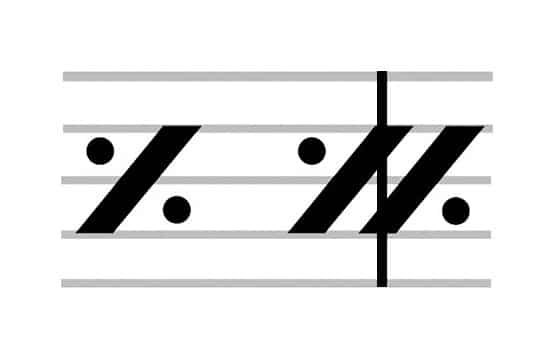
This is called a simile and indicates that the player should repeat what’s written in the previous bar. There are two simile symbols that you will encounter, commonly in band music:
A ‘single line’ simile indicates that the first bar should be repeated, therefore creating a 1-bar musical loop. In this example, the first bar would be repeated four times. Sometimes a number will be written above the stave to help you keep track of how many times you’ve repeated the bar.

A ‘double line’ simile indicates that the previous two bars should be repeated, therefore creating a 2-bar musical loop.

Why are simile symbols used?
These symbols are not used to save paper or inconvenience the player, they save brain power! The simile symbol allows us to clearly see when material is repeated. As a player, you can simply memorise the bar and keep count of the repetitions. If the repetitions were to be fully notated on the page you would have to maintain concentration as the music could unexpectedly deviate from the repetition at any moment. You can also easily get lost in a sea of notes if it all looks very similar!
Do similes make your life easier? I’d love to hear your thoughts in the comments section below.





Thanks for putting that up Rob. I was getting confused with what their differences were and what they meant!
A minor disadvantage of the use of similes is that playing the repeated phrase from memory I find not to be totally reliable so I play the bars as written in full the required number of times. This requires a reliable way of counting the repeats. When the music is written in full the player simply plays the music in sequence without any need to count the repeats.